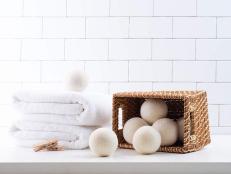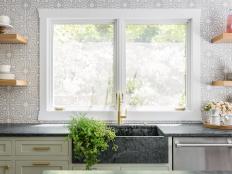Green Building on a Budget
Few dispute the point that green building produces environmental benefits, but the economic benefits are often perceived as minimal. And when long-term economic benefits are acknowledged, it's with the caveat of increased upfront building costs. In reality, there are many low-cost green building practices that can be incorporated into a home.
General Design Strategies
To maximize the economic benefits of green building, it's important to incorporate sustainable building practices during the design phase of a project. Here are some ways to do it:
- Integrate the planning and design processes. Including the general contractor and the landscape designer in the planning with the engineer and the architect can save in energy design, streamline construction costs and protect existing vegetation.
- Minimize east- and west-facing windows. This helps to minimize cooling loads.
- Leave floor slabs exposed. Eliminating carpeting helps avert the formation of mold.
- Avoid structural overdesign. Optimal value engineering and advanced framing techniques can reduce material use without compromising structural performance.
- Standardize dimensions to optimize material use. Reducing cutoff waste (material scraps left after usable materials are installed) saves money by requiring the use of less material overall, reducing the need for on-site labor for measuring and cutting, and reducing solid-waste disposal fees.
- Incorporate low water use fixtures. Water-efficient equipment will help to conserve water for little, if any, additional cost.
Siting, Land Use and Landscaping
Proper siting, land use and landscaping can help the home to work with its natural surroundings, creating a more comfortable indoor and outdoor environment for homeowners. Incorporate these low-cost practices for green building:
- Cluster homes close to services. This reduces the cost and environmental impact of pavement, sewer lines, utility lines and storm-water systems.
- Manage storm water responsibly. Rather than carry storm water off-site in storm sewers, allow for carefully planned infiltration basins and reduce impermeable surfaces.
- Use native plantings. Native landscaping does not require irrigation or chemical treatments. In most cases, it costs less to landscape with native vegetation than to put in lawns.
Energy Systems
Correct HVAC-system design and use of outside air helps keep indoor air comfortable and healthy, and it reduces costs for homeowners. Here are some low-cost green approaches to a home's energy system:
- Model the home. During design, model the energy performance of a building so that mechanical systems can be optimized.
- Expand the comfort envelope and downsize cooling equipment. Provide operable windows for natural ventilation and ceiling paddle fans for increased airflow to reduce loads on mechanical cooling equipment.
- Don't run ducts to exterior walls. Less ductwork is required this way, which saves money.
Products and Materials
Using recycled-content materials certainly helps green a home. In addition, consider looking at conventional building materials in a new way to achieve a green effect. Here are some ideas:
- Use structural materials as finish materials. Using exposed wood beams, concrete floor slabs and tilt-up concrete panels saves on building components that are costly in terms of resources and dollars.
- Downsize hot-water pipes. Smaller diameter pipes are less expensive, deliver hot water faster, reduce standby losses from hot-water pipes and reduce water waste.













































